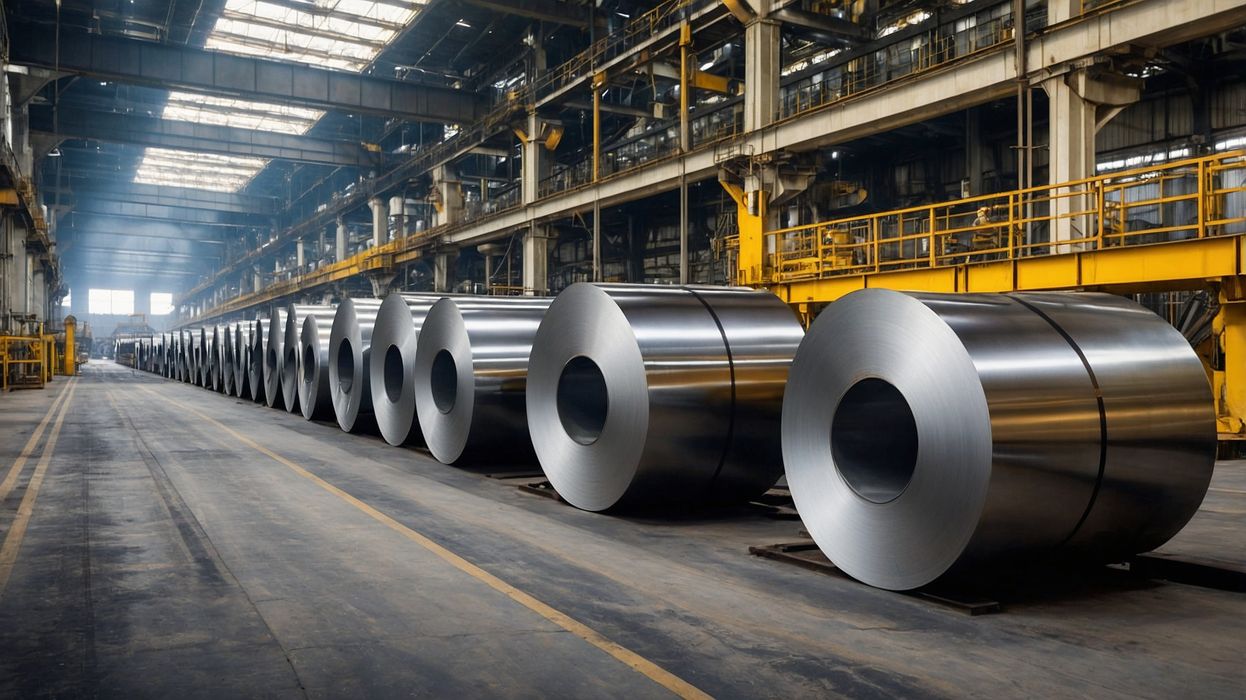
Charles R. Goulding and Preeti Sulibhavi delve into the Biden Administration’s groundbreaking $1 billion investment in hydrogen-powered green steel projects, positioning the U.S. as a leader in sustainable steelmaking.
On March 26, 2024, the Biden Administration announced up to US$1 billion in commercial hydrogen “green steel” projects. Two significant grants of US$500 million each were awarded to Cleveland-Cliffs in Ohio and SSAB Steel in Mississippi. This move represents a crucial step towards advancing low-emission ironmaking facilities in the United States, leveraging clean hydrogen to replace traditional coal or natural gas in the steelmaking process.
A Shift in Steelmaking Leadership
Before this groundbreaking announcement, steel plants outside the U.S., particularly in China, Germany, and Sweden, were leading in hydrogen-based steel processing. The introduction of these projects signals a strategic shift, positioning the United States as a formidable player in the global green steel industry.
Cleveland-Cliffs: A Domestic Powerhouse
Cleveland-Cliffs, a major player in the U.S. steel industry, plans to develop a low-emission ironmaking facility that will utilize clean hydrogen. This initiative aligns with the Biden administration’s preference for Cleveland Cliffs’ acquisition bid for U.S. Steel over Nippon Steel’s bid. By integrating hydrogen-based processes, Cleveland-Cliffs aims to significantly reduce carbon emissions in its steel production, reinforcing its commitment to sustainable practices.
SSAB Steel: A Global Perspective
The grant to SSAB Steel is particularly notable due to the company’s Swedish ownership. Sweden has been at the forefront of hydrogen steel processing and 3D printing technologies. SSAB’s initiatives in the United States will complement its existing projects in Sweden, where the company is pioneering hydrogen-based steel production.
Sweden’s Hydrogen Initiatives
Sweden’s leadership in hydrogen steel processing is exemplified by H2 Green, a Swedish company that has purchased the largest hydrogen emission-reducing electrolyzer in Europe from Thyssenkrupp Nucera of Germany. This electrolyzer will be installed in a facility in Northern Sweden, supported by a €700 million fund and part of Germany’s €13.2 billion allocation for hydrogen projects.

The 3D Printing Connection
The intersection of hydrogen steel processing and 3D printing represents an exciting frontier in manufacturing technology. Both Cleveland-Cliffs and SSAB Steel are exploring the potential of 3D printing to enhance their production processes and products.
SSAB’s Utilization of 3D Printing
SSAB has been extensively utilizing 3D printing materials to innovate and improve its steel products. The integration of 3D printing in steel manufacturing offers numerous advantages, including the ability to create complex geometries, reduce material waste, and enhance production efficiency.
H2 Green’s Collaboration with Porsche
H2 Green, a key player in Sweden’s hydrogen initiative, recently entered into an agreement to supply Porsche with hydrogen-reduced steel. Porsche, a leading automotive company, has been a pioneer in using 3D printing for various components of its vehicles. This collaboration underscores the synergy between hydrogen-based steel production and 3D printing technologies.
Porsche’s utilization of 3D printing has been transformative. The company uses 3D printing to produce lightweight, high-strength components that improve vehicle performance and efficiency. Examples include customized pistons, which enhance engine power and reduce fuel consumption, and intricate parts for electric vehicle batteries, which optimize energy storage and management.
The Research & Development Tax Credit
The now permanent Research and Development (R&D) Tax Credit is available for companies developing new or improved products, processes and/or software.
3D printing can help boost a company’s R&D Tax Credits. Wages for technical employees creating, testing and revising 3D printed prototypes can be included as a percentage of eligible time spent for the R&D Tax Credit. Similarly, when used as a method of improving a process, time spent integrating 3D printing hardware and software counts as an eligible activity. Lastly, when used for modeling and preproduction, the costs of filaments consumed during the development process may also be recovered.
Whether it is used for creating and testing prototypes or for final production, 3D printing is a great indicator that R&D Credit-eligible activities are taking place. Companies implementing this technology at any point should consider taking advantage of R&D Tax Credits.
Conclusion
The Biden Administration’s investment in hydrogen “green steel” projects marks a significant milestone in the pursuit of sustainable steel production. By supporting Cleveland-Cliffs and SSAB Steel, the U.S. is making a strategic move to advance its capabilities in hydrogen-based steelmaking and 3D printing technologies. These projects not only reduce carbon emissions but also position the United States as a leader in the global transition to cleaner, more efficient industrial processes.
As hydrogen steel processing and 3D printing continue to evolve, the collaboration between industry giants like Cleveland-Cliffs, SSAB Steel, and innovators such as Porsche highlights the transformative potential of these technologies. The integration of 3D printing in steel manufacturing not only enhances product quality and performance but also aligns with global efforts to combat climate change through sustainable industrial practices.
The future of steel production is being reshaped by these advancements, promising a cleaner, more efficient, and innovative approach to one of the world’s most essential industries.
